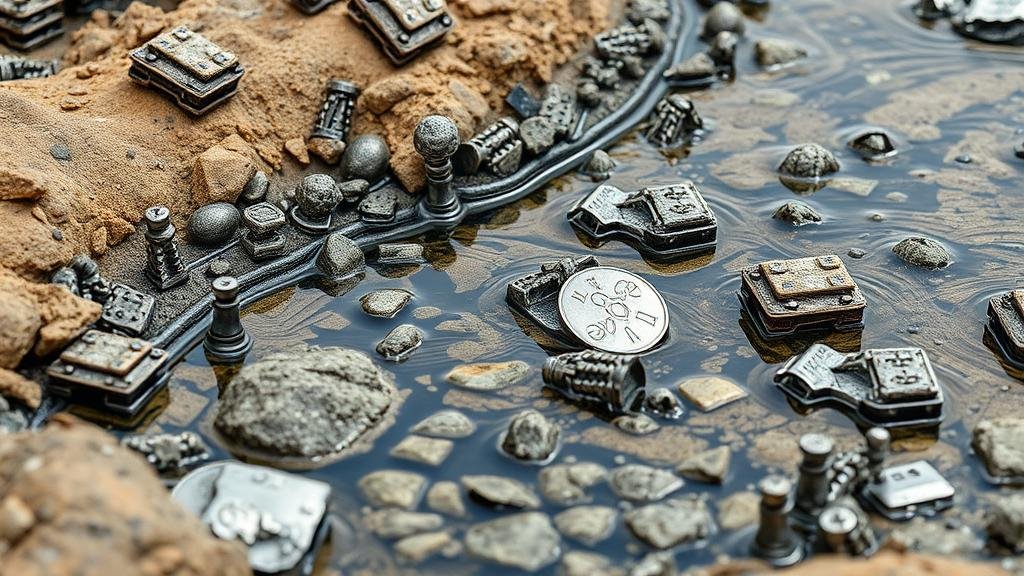Techniques for Recovering Silver From High-Clay Ores in Wet Environments
Techniques for Recovering Silver From High-Clay Ores in Wet Environments
The recovery of silver from high-clay ores presents unique challenges, particularly in wet environments where traditional methods may fall short. Clay minerals can impact both the efficiency of extraction processes and the overall economics of silver mining. This article explores various techniques for effectively recovering silver from these ores, highlighting the significance of using tailored approaches that consider the physical and chemical properties of clay-rich materials.
Understanding High-Clay Ores
High-clay ores are characterized by a significant presence of clay minerals, such as kaolinite, illite, and montmorillonite. e minerals can complicate the extraction processes by absorbing water and expanding during interactions, which affects the permeability and reactivity of the material. In wet environments, moisture content increases the challenges associated with processing these ores, requiring innovative techniques for effective recovery.
1. Pre-Treatment Techniques
Pre-treatment techniques are essential to enhance the liberability of silver from clay-rich ores. Here are three prominent approaches:
- Physical Agitation: Mechanical methods, such as milling or stirring, can help break down clay aggregates, thereby increasing the surface area for subsequent extraction.
- Chemical Treatments: The use of dispersants or surfactants can improve the separation of silver particles from clay by modifying surface tension. This enhances the effectiveness of subsequent leaching processes.
- Heat Treatment: Applying heat to the ore can lead to dehydration of clay minerals, reducing their adverse effects. Calcination has been shown to improve silver extraction rates significantly.
2. Leaching Techniques
Leaching is a common method for extracting silver from ores. In high-clay environments, certain leaching strategies offer more favorable outcomes:
- Cyanidation: Although cyanide is the most widely used agent for silver extraction, its efficacy can be diminished in clay-rich ores because of clays adsorption properties. Modifications, such as the application of sodium hydroxide to enhance cyanide availability, have been proposed.
- Thiosulfate Leaching: This method is gaining popularity as a non-toxic alternative to cyanidation. Thiosulfate leaching has shown promise in recovering silver from clay-rich ores in an aqueous medium without the harmful effects of cyanide.
- Bioleaching: Employing microorganisms to dissolve silver can be particularly useful. Certain bacteria are adept at breaking down clay barriers, allowing for more efficient recovery.
3. Flotation Techniques
Flotation is a physical-chemical separation technique that can be effective in recovering silver from high-clay ores, especially when combined with other methods:
- Adjusting pH Levels: Altering the pH can enhance the separation of silver since different minerals respond differently to the addition of chemicals. For example, a higher pH can help reduce the negative charge of clay minerals, promoting better flotation of the valuable silver.
- Using Collectors: Collectors are chemicals that render silver particles hydrophobic, enabling them to attach to air bubbles and float. Careful selection and optimization of collector types can facilitate silver recovery despite the presence of clays.
Case Study: Recovery in Brazil
A notable application of these techniques can be observed in the Serra do Carajás region of Brazil, where high-clay silver ores are prevalent. Here, a combination of pre-treatment physical agitation and thiosulfate leaching has achieved recovery rates exceeding 85%, demonstrating the effectiveness of employing multiple strategies tailored to local conditions.
4. Environmental Considerations
When recovering silver from high-clay ores, it is crucial to consider the environmental impacts of each technique. Many traditional methods, such as cyanidation, pose significant risks to local ecosystems. Strategies such as bioleaching and the use of thiosulfate represent more sustainable alternatives that minimize environmental degradation while maintaining recovery efficiency.
Conclusion
Recovering silver from high-clay ores in wet environments requires a multifaceted approach that incorporates pre-treatment, leaching, and flotation techniques. By selecting appropriate methods that address the specific challenges presented by clay minerals, mining operations can enhance recovery rates and reduce environmental impacts. As the demand for silver continues to rise, the development of innovative techniques tailored to these complex ore types will be crucial for sustainable mining practices.
Actionable Takeaways:
- Invest in research to identify suitable pre-treatment methods based on specific ore characteristics.
- Consider alternative leaching agents like thiosulfate to mitigate environmental risks.
- Monitor pH levels and tailor collector usage in flotation processes for optimal silver recovery.



